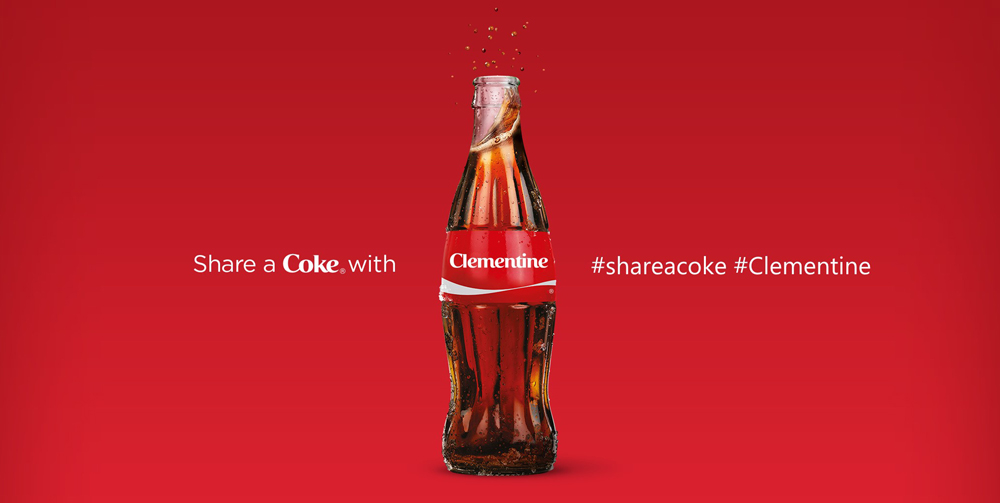
Marketing is incomplete without TV advertisements for products. These ads are an affordable way to reach targeted audiences. The right ad agency can build brand loyalty and keep customer relationships intact. Despite the proliferation of the internet, television remains an important part of the consumer experience. It is important to think about public health policies that might affect advertising for food and beverages.
Numerous studies have evaluated the effect of television ads on children’s food preferences. Research in Colombia suggests that unhealthy products are more commonly advertised on television than they were previously. To assess the effects of this type advertisement, researchers looked at the 2017 data for all foods/beverages advertised on TV in Colombia. Research shows that the effectiveness of television advertising depends on many factors, such as socioeconomic status, cultural value, and product features. Among the results, TV ads for foods with poor nutritional quality, such as sugar and saturated fat, were among the most common.
Other studies have found that children may be more likely to ask for a certain food on TV, and make a purchase. This is good news for the product. However, this also indicates that advertisers should think about the health consequences of their ads. Public health advocates need to consider how to maximize the benefits of ad campaigns while minimising their negative consequences.

According to researchers, prime time is when most people have a television in their living room. This holds true for mobile advertising, which is increasing in popularity. It is important that you ensure the quality of content displayed.
The most popular product category, based on the total number of impressions, was beverages. In particular, the beverages and dairy products category, comprised nearly half of all television commercial instances.
The study also looked at the quality of advertisements and the nutritional characteristics of each product. For instance, the PAHO model, the acronym for the Pan American Health Organization, can identify products with excess sodium and free sugars. According to the study, 87 percent of TV advertisements for food and beverages exceeded PAHO's thresholds for at most one nutrient. Nevertheless, a majority of these products were deemed to be of low nutritional quality, which would be expected considering the high price of such products. Therefore, a public health policy that can nudge consumers away from such unhealthy options might be in order.
There are many aspects to be aware of when you promote a product. You could ban such product promotion in schools or restrict the use child-directed characters in advertising campaigns. Ultimately, the effectiveness of television ads for products is a complex question, which will continue to be debated for years to come.

To answer the question, however, it's best to view the data in the context a comprehensive public safety strategy. This could include warning labels being placed on packaging to warn consumers about products that make unsubstantiated claims. It might also be necessary to ban certain characters from movies and TV shows.
FAQ
What are the basics of television advertising?
Television advertising is a powerful medium to reach many people at one time. It was also very costly. However, if you use it well, it can be incredibly powerful.
Although there are many types of TV ads available, they all share certain characteristics. When planning any TV ad, the first thing you should do is ensure that it fits within its category. If you're running a product commercial, don't try to run a lifestyle commercial as a product commercial. Your message must be consistent throughout the campaign.
It is important to remember that ads are best aired during prime-time. This is because viewers tend to watch TV while sitting down in front the television. You want them relaxed enough that they can focus on you words.
You don't have to be rich to achieve great results. The opposite may actually be true. According to a University of California study, commercials that aired on popular TV shows had lower sales than those that aired on unpopular programs. It is important to do the right thing if your TV advertising budget is large.
How can you choose your target audience?
Begin with you and your closest friends. Do you not know where to start? Ask yourself "Whom do I want to reach?"
Ask yourself these questions: Who are the most influential people in my industry? What are the problems they face daily? Which people are the most intelligent in my industry? Where do they hang out online?
Rewind to the beginning, when your business was founded. What was your motivation for starting? What problem solved you for yourself? How did that happen?
These answers will allow you to determine who your ideal customers are. You'll also learn more about what makes them tick and why they buy from you.
Look at your competitors' sites and social media pages for clues as to who they cater.
Once you have identified your target customer, you need to decide the best channel to reach them. For example, if your company provides services to real estate agents, you might create an informational website targeting home buyers.
If your company provides software to small businesses, you might consider creating a blog for those owners.
If you sell clothing, you can create a Facebook fan page for teens. Or if you're a restaurant owner, you could set up a Twitter account for parents looking for kid-friendly places to eat.
It is important to remember that there are many methods of getting your message across.
What is an advertiser buyer?
Advertising space is purchased by an advertiser on TV, radio and printed media.
Advertisers are paid for the time that their message will appear.
They don't necessarily look for the best advertisement, but instead seek out the most effective way to reach their target market.
An advertiser might have information specific to their potential customers such as age and gender, marital status or occupation, hobbies, interests, income, etc.
These data can be used to help advertisers decide the most effective medium. Direct mail might be more effective with older customers, for example.
Advertisers also consider the competition. Advertisers will look at the competition to see if similar businesses are nearby.
Advertisers should also consider how much money they have available and how long it takes to use it.
What do you need to know about radio advertising?
Understanding the interactions between different media is essential. Remember that media can complement each other and are not necessarily competitive.
Radio is best utilized as an extension to TV advertising. Radio can complement TV advertising by reinforcing key messages, and providing additional information.
Radio listeners are often not able to handle long TV commercials. Radio ads are often shorter and cheaper.
What is advertising's primary purpose?
Advertising is not just about selling products; it's also about creating an emotional connection between you and your customers.
Advertising is about communicating ideas and values to people who are already interested in what you have to offer. It is about changing attitudes and minds. It's also about creating relationships.
It's all about making people feel good about themselves.
You can't sell to your customers if you don’t know their needs.
You must first get to know your customer before you can start advertising projects.
This allows you to design ads that resonate well with them.
What is advertising?
Advertising is an art form. Advertising isn't just about selling products. It's all about creating emotional connections between people with brands.
Advertising is about storytelling and using images to communicate ideas.
Communication must be clear and persuasive. It is important to share a story that appeals to your target audience.
Advertising is thus different from other forms, such public speaking, writing, and presentations.
A successful ad campaign is a way to establish a brand identity.
This is how you are memorable. People want to remember you.
What is an advertising campaign?
An advertising campaign is a series of advertisements designed to promote a product or service. It can also refer to the whole production of such ads.
The Latin word for "to Sell" gives rise to the term "ad". The first known use was by Marcus Terentius Varro (116-27 BC), who used it as a verb meaning "to make a sale."
Large companies or agencies usually do advertising campaigns. Many media types can be used in these campaigns, including television, radio and print.
Advertising campaigns can last up to six months and have specific goals. Advertising campaigns can have different goals. Some are focused on increasing sales while others generate awareness.
Statistics
- Google will display whichever ad type (CPM or CPC) is expected to earn more revenue for the publisher, which is in Google's best interest since they take a 32% share of the revenue. (quicksprout.com)
- It's 100% reliant on your website traffic. (quicksprout.com)
- Worldwide spending on advertising in 2015 amounted to an estimated US$529.43 billion. (en.wikipedia.org)
- In 1919 it was 2.5 percent of gross domestic product (GDP) in the US, and it averaged 2.2 percent of GDP between then and at least 2007, though it may have declined dramatically since the Great Recession. (en.wikipedia.org)
External Links
How To
How to advertise Facebook
Facebook is the most popular social network worldwide. Facebook is used daily by approximately 1 billion people every month. Facebook is one of the most important companies in the world. Facebook's unique features like chat, video calls and games are what make it so popular. Facebook accounts enable users to post photos, leave comments, receive messages, play games and view videos. Facebook also allows businesses and individuals to promote their products through advertisements. These advertisements can include text ads (banner ads), banner ads, sponsored stories or promoted posts.
Facebook advertising can be done in two ways. Advertising on Facebook can be paid for. You can also use free methods. We will discuss how to do these two things below.
How to advertise on Facebook through paid options
Paid advertising is paid by Facebook for each impression. You can pay either monthly or annually. Facebook offers several types of paid advertisement. These are:
Text ads – These are the same as regular text ads. These ads are not displayed next to newsfeed articles but appear above or beneath the feed.
Banner ads are large, rectangular images that take up the entire screen. They typically advertise an offer, or a product.
Promoted Posts – They appear at top of the newsfeed, just like regular posts. Businesses frequently use promoted posts in order to promote their products.
Sponsored Stories are stories that have relevant content and appear at the top users' feeds. These stories can be paid for by brands or businesses that want to reach potential clients.
How to promote using free options
Facebook offers free advertising. These include text ads, banner ads, promoted posts, sponsored stories, and other forms.
Free advertising isn't able to create a specific audience, unlike regular Facebook. Targeting people on the basis of their age, gender, geography, language, interests or relationship status is limited.
How to start advertising on Facebook
The first thing you need to do if you want to start advertising on Facebook is to sign up for an account. Once you have created an account, you can access all available tools. Follow the below steps to set-up your account.
-
Click "Create an entirely new ad group."
-
You can enter a name to create your ad group.
-
Select the type (text, image or video) of advertisement you would prefer to place.
-
Choose which locations you would like to target.
-
Set the budget amount.
-
If you use Facebook Audience Network, select it from the drop-down menu.
-
Click "Next Step"
-
Click "Review" and then click "Continue".
-
Before you click "Continue", review your selections.
-
Please complete any additional information.
-
Click "Save Your Changes."
-
Wait until your ad-campaign has ended before you start your campaign.
-
Once your campaign has ended, click "View Ad Statistics."
-
See the results of your campaigns.
-
Repeat steps 13-16 until you find the best settings for your business.
-
Advertise now!